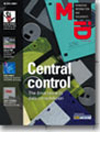
Better by design
- Article 9 of 26
- M-iD, October 2004
Page 1 | Page 2 | Page 3 | Page 4 | All 4 Pages
How a product is described and how it is displayed can discourage people from buying something unsuitable in the first place. "The larger the images, the more images I get, the more detail I can see - the less likely I am to return it," says Dawson. "If you're selling me a PC, show me the back so I can see what ports it has. If you're selling me a music player, give me the infinite technical details so I know whether it supports a particular format."
The web site of electrical retailer Comet is a good case in point, providing users with a whole list of technical details to help customers make their choice. In addition to minimising returns, it also helps instil confidence in buyers.
Don't overlook the law
There are a number of other legal issues that need to be taken into consideration including the Data Protection Act, which requires explanations of how information collected from the site will be used, and the Privacy and Electronic Communications Act, which will require end users to check boxes rather than uncheck them to sign up for emails from web sites.
In addition, the Copyright and Patents Act (CPA) and the Disability Discrimination Act should be taken into account. Although the CPA usually just results in copyright notices on each page and a 'terms and conditions' page explaining how content may or may not be used by third parties, by far the biggest effect it has is in dictating the look and feel of a site.
"Before you launch [a site], you have to make sure no one else has made anything identical - to make sure no one accuses you of plagiarism," says Dawson. "If you come up with a design identical to someone else's, it may cause problems if you're in the same line of business."
Any organisation deploying a web site needs to make sure that the site design is not too similar to anyone else's, even if the actual code used to create the page is completely different.
Make it inclusive
Whenever people talk about web site usability, the Disability Discrimination Act inevitably comes up. Any organisation providing a service needs to ensure that those with disabilities are able to access it, and that includes web-based services.
However, is not only disabled people that can benefit. "Something like a large font size - or letting the user change the font size - is very important to elderly users," says Jakob Nielsen, a web site accessibility guru.
"Reduced eye sight starts to happen to the entire population as they age, starting at 40 but becoming a severe problem when people get to 50 or 60. So that's just about every senior executive or high-level decision maker - and about 20% of users," says Nielsen.
However, there are no laws about web site accessibility for the elderly. "As a result, the guidelines from my company's web site about accessibility for disabled users sell 10 times more than the guidelines for elderly users, even though there's 10 times as many elderly users, they're worth much more money and are more important for e-business and e-government. It's contrary to all business sense," says Nielsen.
Implement cascading stylesheets
Page 1 | Page 2 | Page 3 | Page 4 | All 4 Pages


